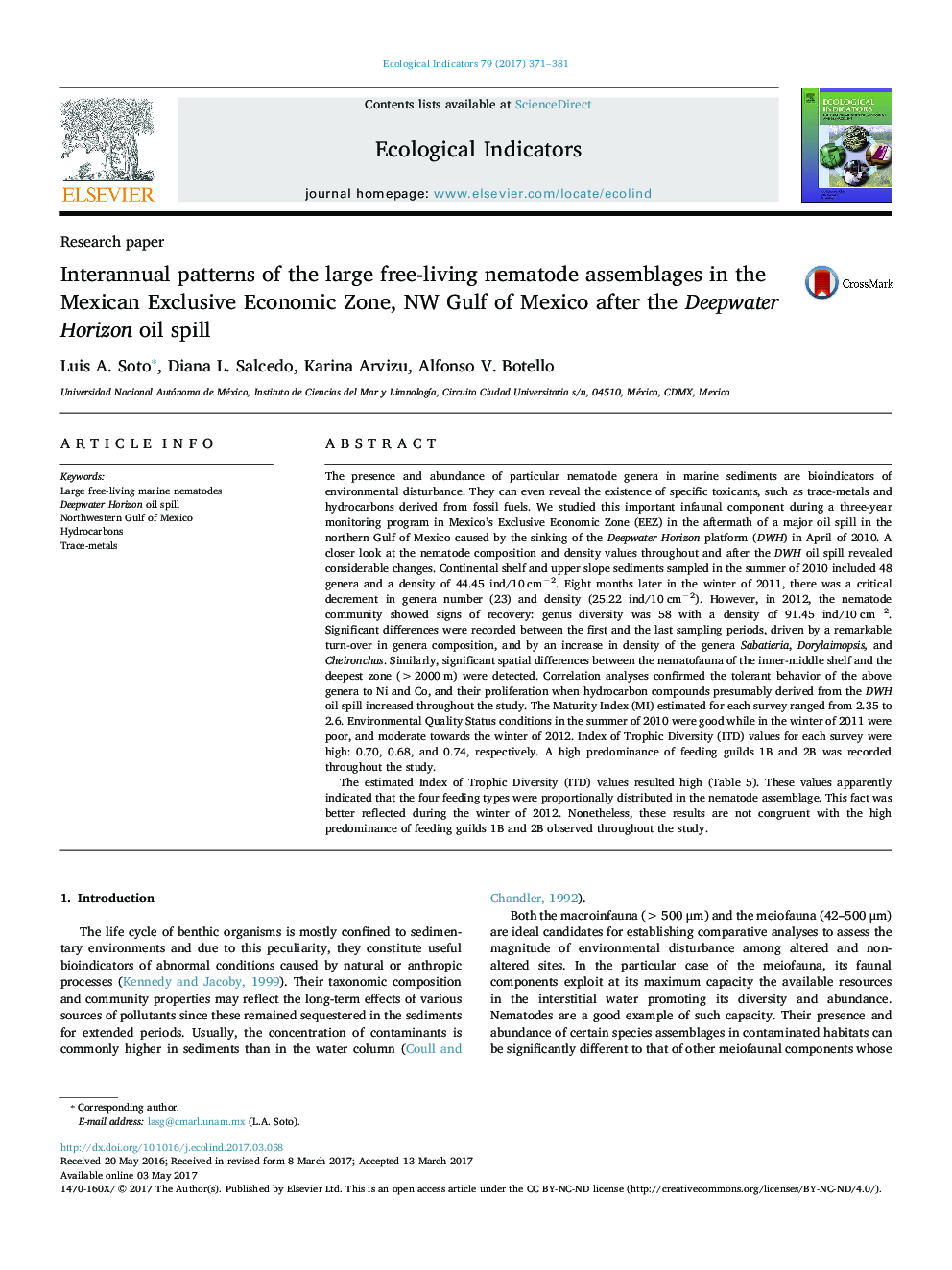| Article ID | Journal | Published Year | Pages | File Type |
|---|---|---|---|---|
| 5741785 | Ecological Indicators | 2017 | 11 Pages |
â¢Nematofauna displayed changes throughout a 3-year study in the NW Gulf of Mexico.â¢Nematode assemblage (83 genera) was dominated by three co-existing genera.â¢Sabatieria, Dorylaimopsis, and Cheironchus are good oil spill bioindicators.â¢Three nematode genera exhibited trace-metal and hydrocarbon tolerant behavior.â¢Nematofauna changes were attributed to increasing concentration of oil compounds.
The presence and abundance of particular nematode genera in marine sediments are bioindicators of environmental disturbance. They can even reveal the existence of specific toxicants, such as trace-metals and hydrocarbons derived from fossil fuels. We studied this important infaunal component during a three-year monitoring program in Mexico's Exclusive Economic Zone (EEZ) in the aftermath of a major oil spill in the northern Gulf of Mexico caused by the sinking of the Deepwater Horizon platform (DWH) in April of 2010. A closer look at the nematode composition and density values throughout and after the DWH oil spill revealed considerable changes. Continental shelf and upper slope sediments sampled in the summer of 2010 included 48 genera and a density of 44.45 ind/10Â cmâ2. Eight months later in the winter of 2011, there was a critical decrement in genera number (23) and density (25.22 ind/10Â cmâ2). However, in 2012, the nematode community showed signs of recovery: genus diversity was 58 with a density of 91.45 ind/10Â cmâ2. Significant differences were recorded between the first and the last sampling periods, driven by a remarkable turn-over in genera composition, and by an increase in density of the genera Sabatieria, Dorylaimopsis, and Cheironchus. Similarly, significant spatial differences between the nematofauna of the inner-middle shelf and the deepest zone (>2000Â m) were detected. Correlation analyses confirmed the tolerant behavior of the above genera to Ni and Co, and their proliferation when hydrocarbon compounds presumably derived from the DWH oil spill increased throughout the study. The Maturity Index (MI) estimated for each survey ranged from 2.35 to 2.6. Environmental Quality Status conditions in the summer of 2010 were good while in the winter of 2011 were poor, and moderate towards the winter of 2012. Index of Trophic Diversity (ITD) values for each survey were high: 0.70, 0.68, and 0.74, respectively. A high predominance of feeding guilds 1B and 2B was recorded throughout the study.The estimated Index of Trophic Diversity (ITD) values resulted high (Table 5). These values apparently indicated that the four feeding types were proportionally distributed in the nematode assemblage. This fact was better reflected during the winter of 2012. Nonetheless, these results are not congruent with the high predominance of feeding guilds 1B and 2B observed throughout the study.
